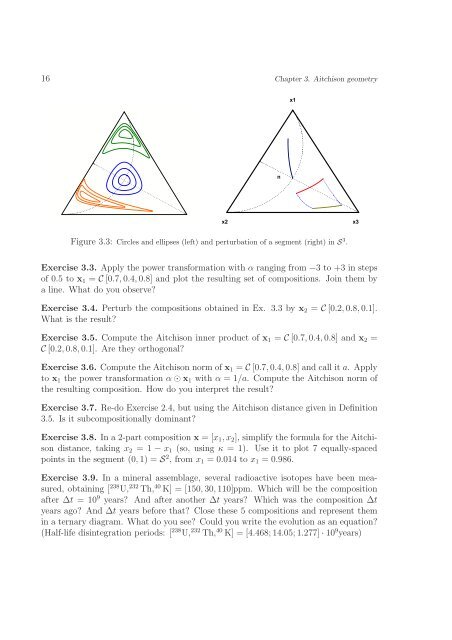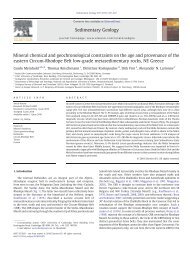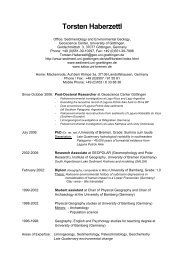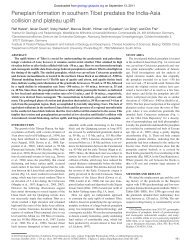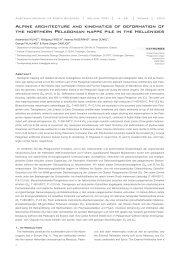Lecture Notes on Compositional Data Analysis - Sedimentology ...
Lecture Notes on Compositional Data Analysis - Sedimentology ...
Lecture Notes on Compositional Data Analysis - Sedimentology ...
Create successful ePaper yourself
Turn your PDF publications into a flip-book with our unique Google optimized e-Paper software.
16 Chapter 3. Aitchis<strong>on</strong> geometry<br />
x1<br />
n<br />
x2<br />
x3<br />
Figure 3.3: Circles and ellipses (left) and perturbati<strong>on</strong> of a segment (right) in S 3 .<br />
Exercise 3.3. Apply the power transformati<strong>on</strong> with α ranging from −3 to +3 in steps<br />
of 0.5 to x 1 = C [0.7, 0.4, 0.8] and plot the resulting set of compositi<strong>on</strong>s. Join them by<br />
a line. What do you observe?<br />
Exercise 3.4. Perturb the compositi<strong>on</strong>s obtained in Ex. 3.3 by x 2 = C [0.2, 0.8, 0.1].<br />
What is the result?<br />
Exercise 3.5. Compute the Aitchis<strong>on</strong> inner product of x 1 = C [0.7, 0.4, 0.8] and x 2 =<br />
C [0.2, 0.8, 0.1]. Are they orthog<strong>on</strong>al?<br />
Exercise 3.6. Compute the Aitchis<strong>on</strong> norm of x 1 = C [0.7, 0.4, 0.8] and call it a. Apply<br />
to x 1 the power transformati<strong>on</strong> α ⊙ x 1 with α = 1/a. Compute the Aitchis<strong>on</strong> norm of<br />
the resulting compositi<strong>on</strong>. How do you interpret the result?<br />
Exercise 3.7. Re-do Exercise 2.4, but using the Aitchis<strong>on</strong> distance given in Definiti<strong>on</strong><br />
3.5. Is it subcompositi<strong>on</strong>ally dominant?<br />
Exercise 3.8. In a 2-part compositi<strong>on</strong> x = [x 1 , x 2 ], simplify the formula for the Aitchis<strong>on</strong><br />
distance, taking x 2 = 1 − x 1 (so, using κ = 1). Use it to plot 7 equally-spaced<br />
points in the segment (0, 1) = S 2 , from x 1 = 0.014 to x 1 = 0.986.<br />
Exercise 3.9. In a mineral assemblage, several radioactive isotopes have been measured,<br />
obtaining [ 238 U, 232 Th, 40 K] = [150, 30, 110]ppm. Which will be the compositi<strong>on</strong><br />
after ∆t = 10 9 years? And after another ∆t years? Which was the compositi<strong>on</strong> ∆t<br />
years ago? And ∆t years before that? Close these 5 compositi<strong>on</strong>s and represent them<br />
in a ternary diagram. What do you see? Could you write the evoluti<strong>on</strong> as an equati<strong>on</strong>?<br />
(Half-life disintegrati<strong>on</strong> periods: [ 238 U, 232 Th, 40 K] = [4.468; 14.05; 1.277] · 10 9 years)


